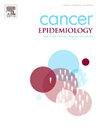Description and recent trends (2011–2019) of early-onset colorectal cancer incidence in Texas
IF 2.3
3区 医学
Q3 ONCOLOGY
引用次数: 0
Abstract
Background
Early-onset colorectal cancer (EO-CRC), diagnosed in individuals under 50, has seen rising incidence rates, while average-onset colorectal cancer rates decline. To understand EO-CRC burden across regions and patient characteristics, detailed incidence data are essential. With Texas's large population and unique demographics, this study examines recent trends in age-adjusted EO-CRC incidence.
Methods
This cross-sectional analysis used 2011–2019 Texas Cancer Registry (TCR) data. The incidence rate of EO-CRC was adjusted to the 2000 US standard population and was stratified by cancer type, sex, race/ethnicity, and stage at diagnosis. The number of EO-CRC cases between 2011 and 2019 was mapped to the Texas counties.
Results
In the study period, a total of 11,848 EO-CRC (7511 colon cancer [EO-CC] and 4337 rectal cancer [EO-RC]) cases were identified. Over 50 % of cases were diagnosed before the age of 45. The age-adjusted incidence rate (AAIR) of EO-CRC showed a slightly increasing trend over the study period (AAIR range: 10.4/100,000 persons [95 % CI = 9.8–11.0]- 12.7/100,000 persons [95 % CI = 12.0–13.3]). The AAIRs of EO-CRC among males were higher than that of females. Non-Hispanic (NH) White population had the highest AAIR, followed by the Black population and Hispanic population, while other races/ethnicities had the lowest AAIR of EO-CRC. The incidence rate of EO-CRC diagnosed at the regional stage was the highest and showed the steepest increasing trend. While EO-CRC case density by county reflects the population density, incidence rates were higher in rural counties.
Conclusion
The incidence of EO-CRC in Texas showed an increasing trend from 2011 to 2019, with notable disparities by sex, race/ethnicity, and cancer stage.
德克萨斯州早发性结直肠癌发病率描述及近期趋势(2011-2019)
背景:早发性结直肠癌(EO-CRC)在50岁以下的人群中被诊断出来,发病率上升,而平均发病的结直肠癌发病率下降。为了了解不同地区的EO-CRC负担和患者特征,详细的发病率数据是必不可少的。由于德克萨斯州人口众多,人口结构独特,本研究探讨了年龄调整后的EO-CRC发病率的最新趋势。方法:采用2011-2019年德克萨斯州癌症登记处(TCR)数据进行横断面分析。EO-CRC的发病率调整为2000年美国标准人群,并按癌症类型、性别、种族/民族和诊断分期进行分层。2011年至2019年期间的EO-CRC病例数被映射到德克萨斯州各县。结果:研究期间共发现EO-CRC 11,848例(其中结肠癌[EO-CC] 7511例,直肠癌[EO-RC] 4337例)。超过50% %的病例在45岁之前被诊断出来。EO-CRC的年龄调整发病率(AAIR)在研究期间呈轻微上升趋势(AAIR范围:10.4/100,000人[95 % CI = 9.8-11.0]- 12.7/100,000人[95 % CI = 12.0-13.3])。男性的EO-CRC指数高于女性。非西班牙裔(NH)白人的AAIR最高,黑人次之,西班牙裔次之,其他种族的AAIR最低。区域阶段诊断的EO-CRC发病率最高,且呈最急剧的上升趋势。各县的EO-CRC病例密度反映了人口密度,但农村县发病率较高。结论:2011 - 2019年,德克萨斯州EO-CRC发病率呈上升趋势,性别、种族和癌症分期差异显著。
本文章由计算机程序翻译,如有差异,请以英文原文为准。
求助全文
约1分钟内获得全文
求助全文
来源期刊

Cancer Epidemiology
医学-肿瘤学
CiteScore
4.50
自引率
3.80%
发文量
200
审稿时长
39 days
期刊介绍:
Cancer Epidemiology is dedicated to increasing understanding about cancer causes, prevention and control. The scope of the journal embraces all aspects of cancer epidemiology including:
• Descriptive epidemiology
• Studies of risk factors for disease initiation, development and prognosis
• Screening and early detection
• Prevention and control
• Methodological issues
The journal publishes original research articles (full length and short reports), systematic reviews and meta-analyses, editorials, commentaries and letters to the editor commenting on previously published research.
 求助内容:
求助内容: 应助结果提醒方式:
应助结果提醒方式:


